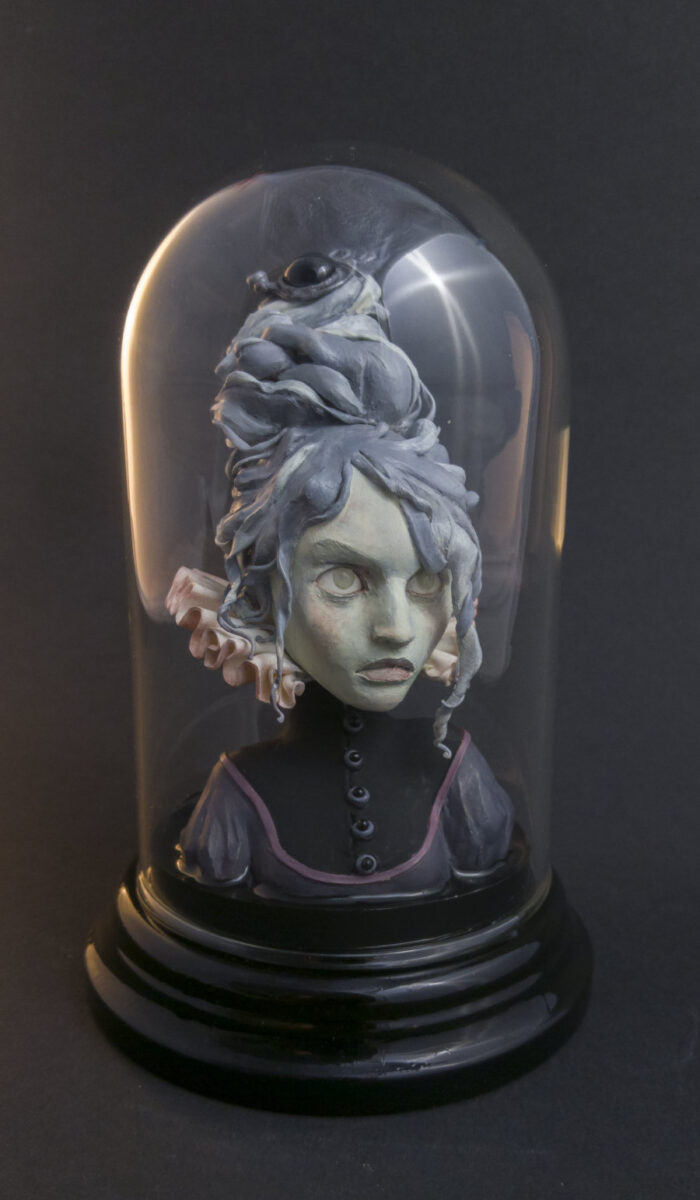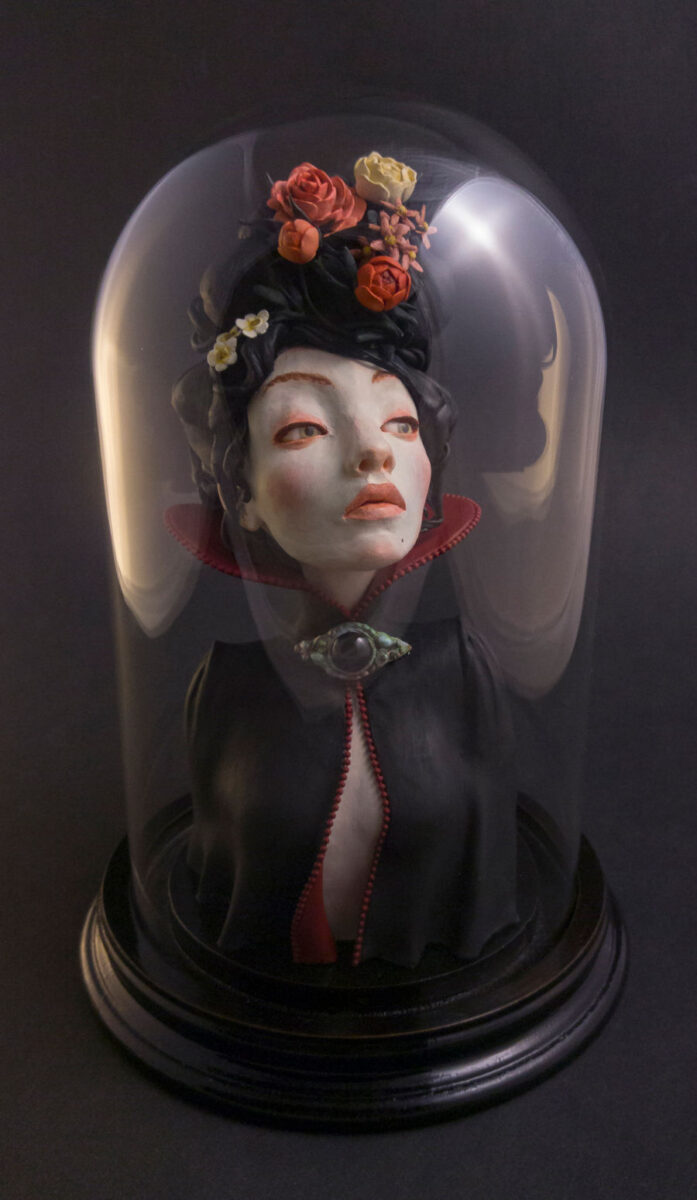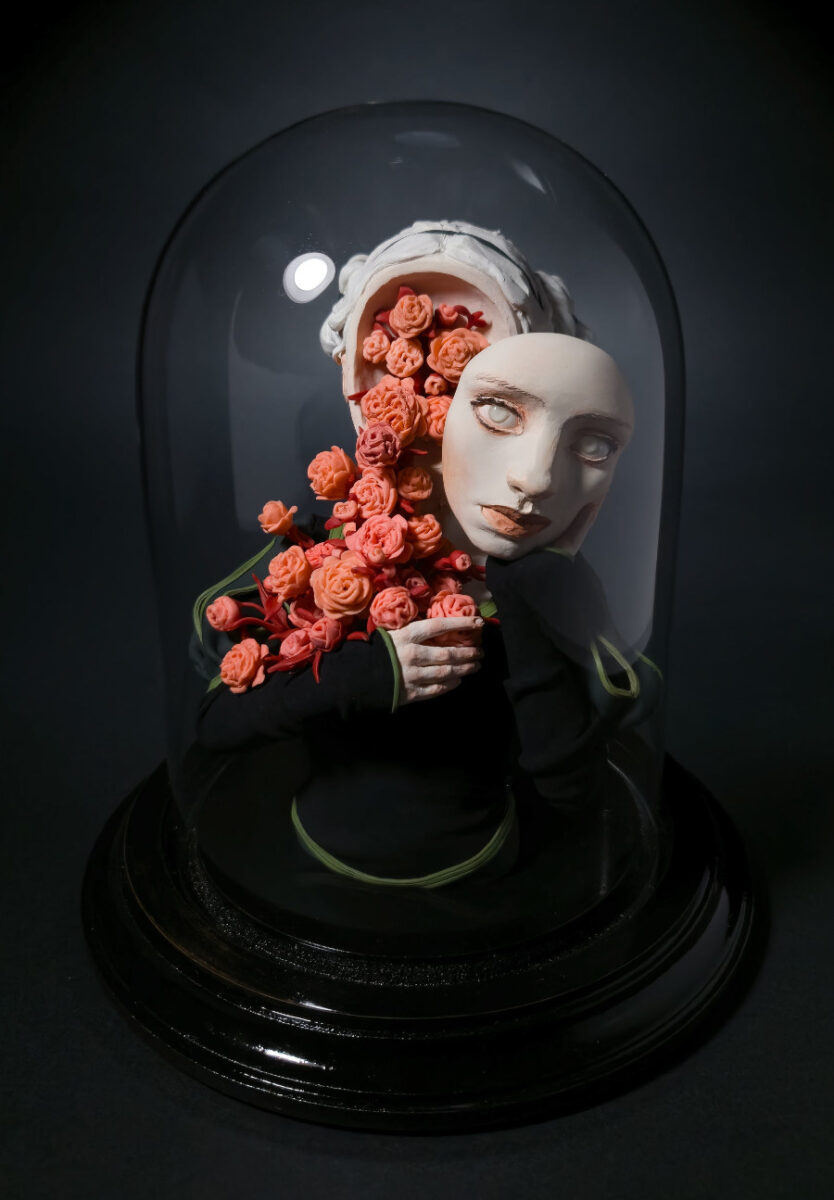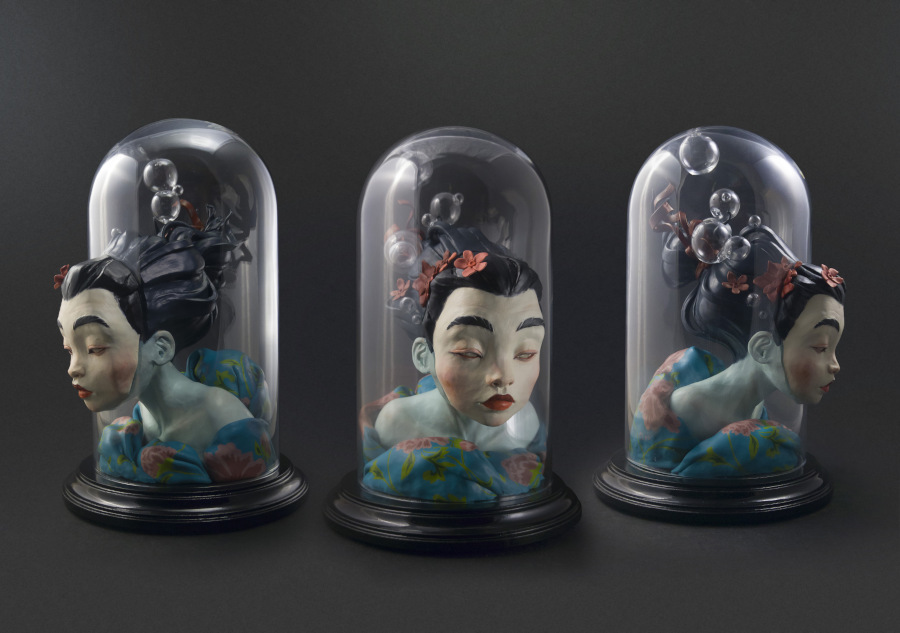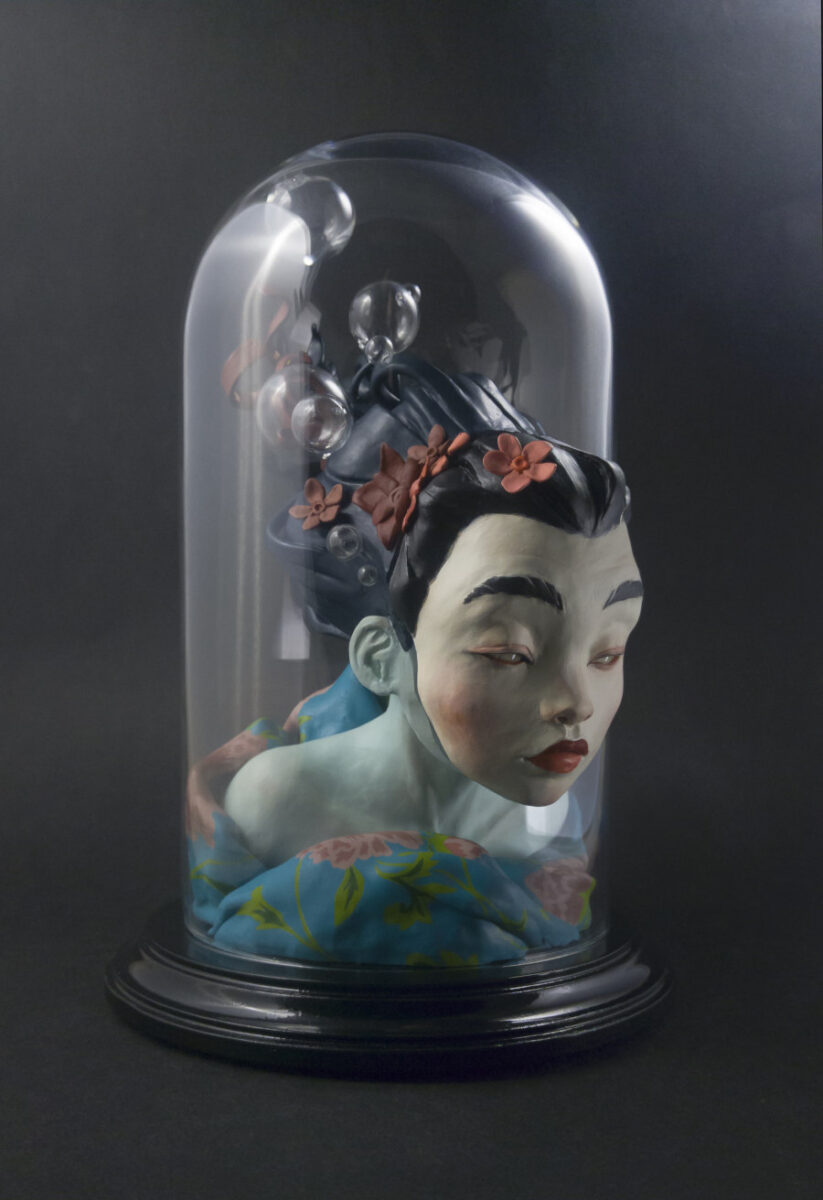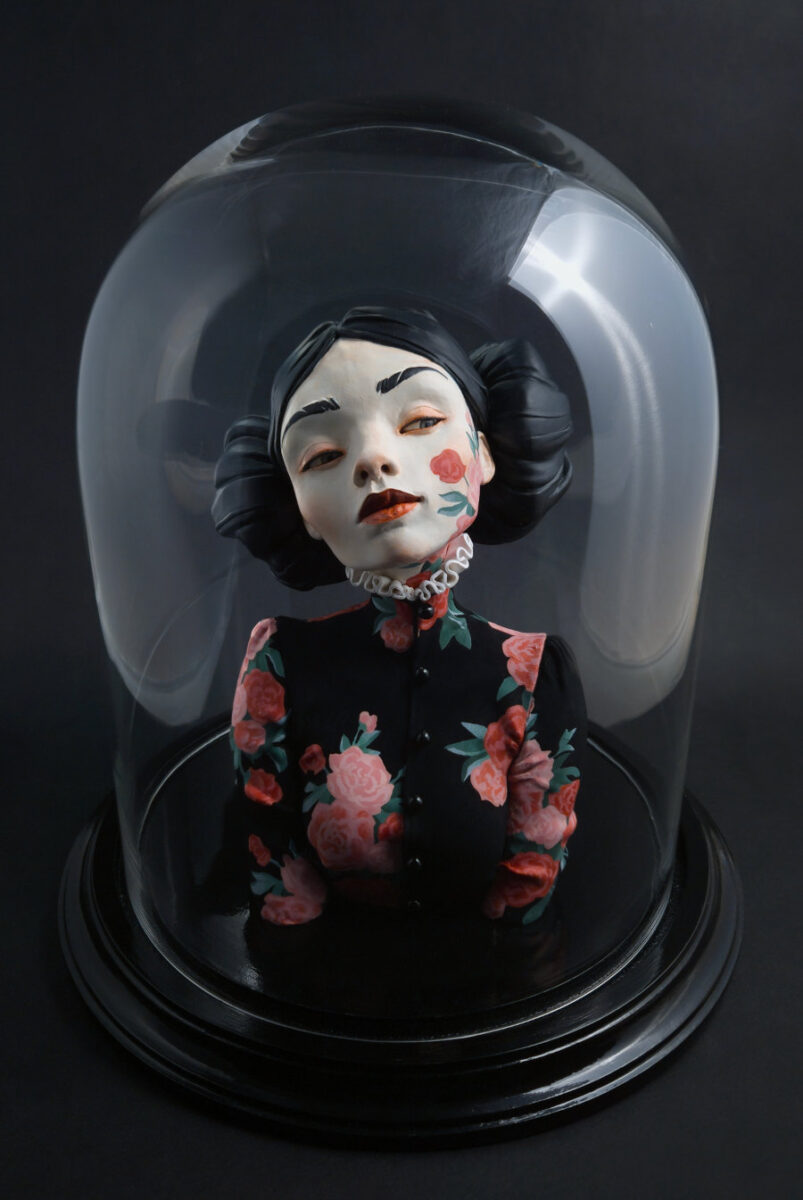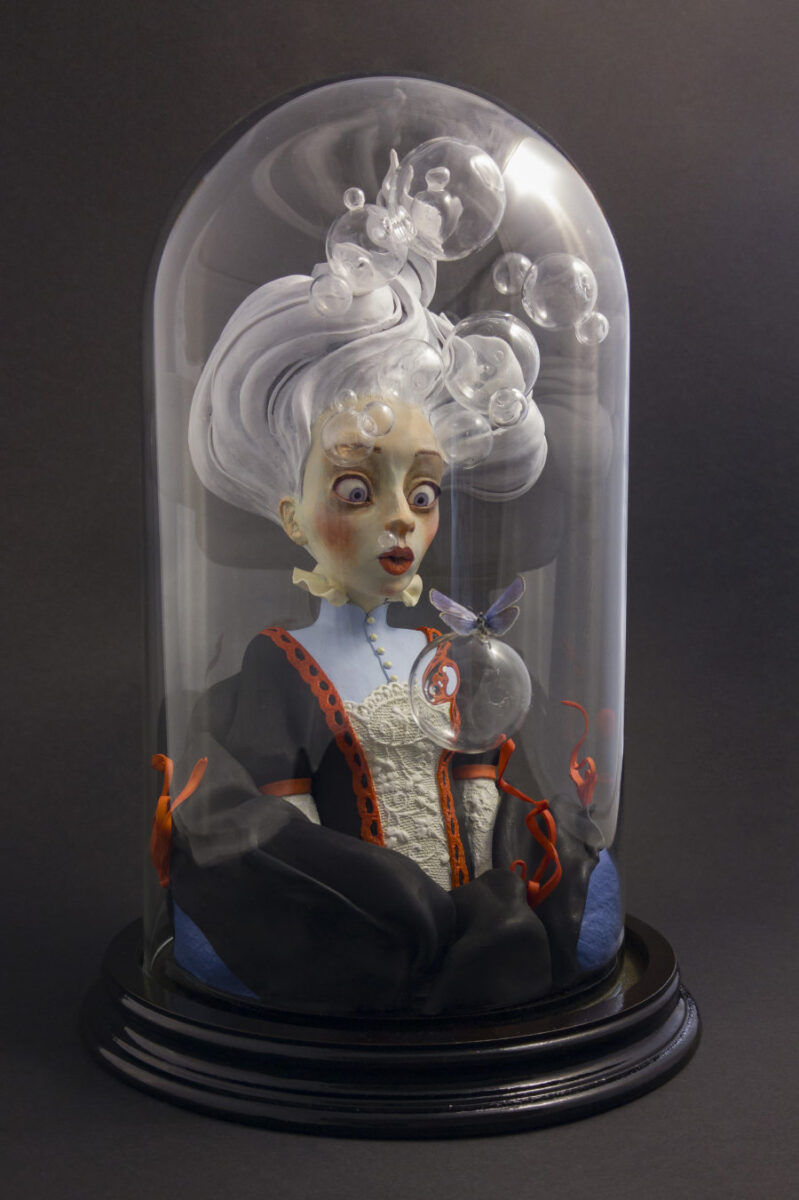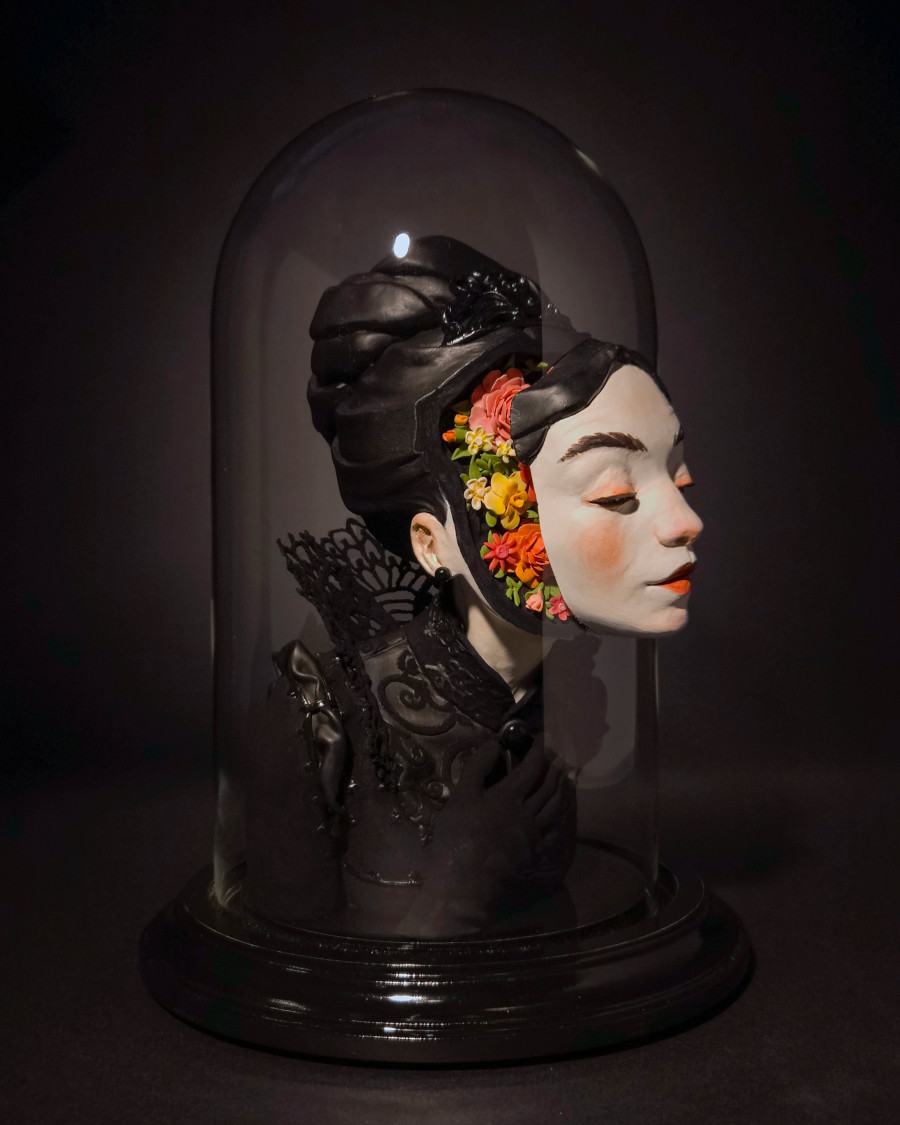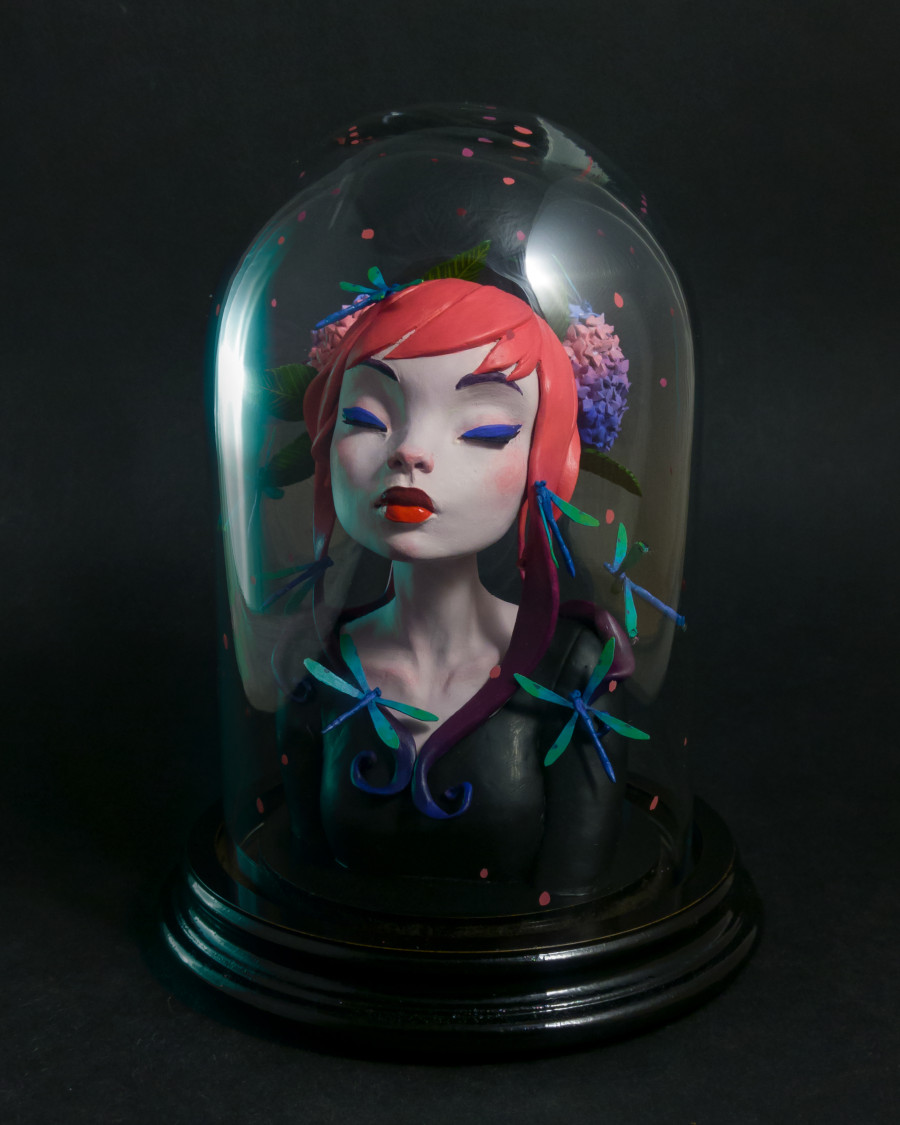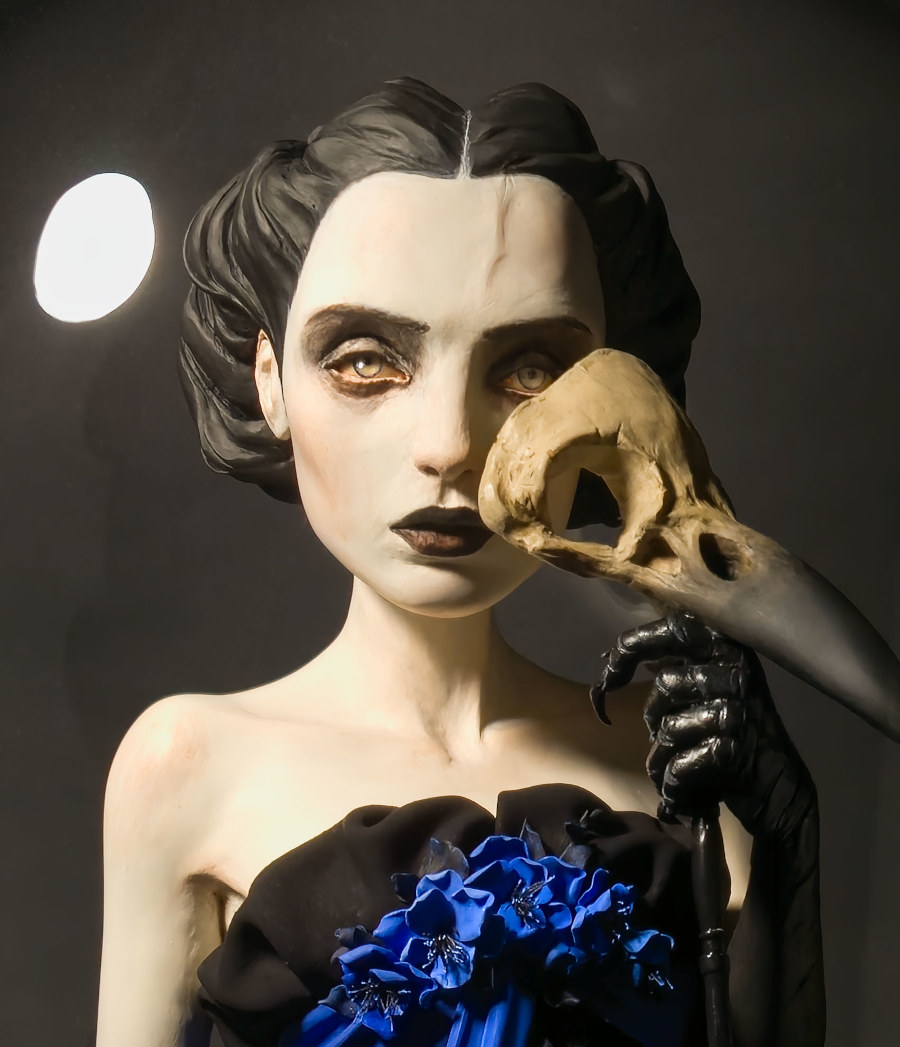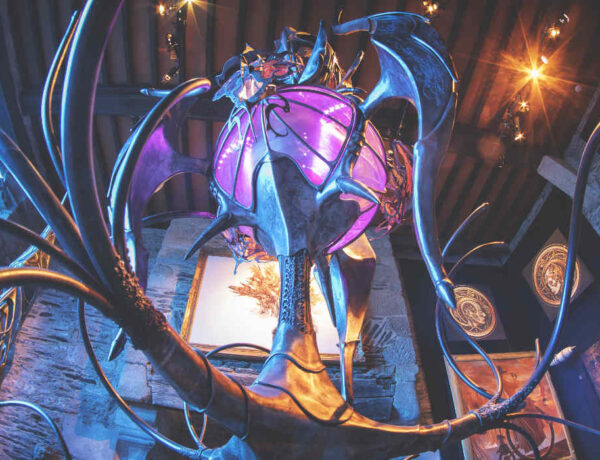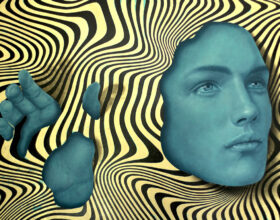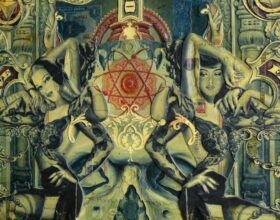Exclusive Interview with Ornélie, 2nd prize winner of the Yasha Young Projects Sculpture award, Beautiful Bizarre Art Prize 2024
With a background in drawing and animation, it could come as a surprise to learn that French artist Ornélie Prioul was the 2nd prize winner of the Yasha Young Sculpture Award 2024, rather than one of our other award categories. Once you see her works, however, the reason for her win is clear. Better known simply as Ornélie, she is a self-taught figurative sculptor quite early on in her three-dimensional art career, yet fully set in her foundations is a lifetime of art spanning personal exploration, professional tutorage, and some rather interesting day jobs. Her whimsical and imaginative style is influenced by everything from classical painting and literature to pop art and street art, enriched by an infectious enthusiasm which continues to push her forward.
In this interview, Ornélie discusses her artistic journey, her wonderfully multi-step creative process, and how winning the Beautiful Bizarre Art Prize has impacted her career. In a time where discord and vulnerability can be rife, art can offer a space where we can connect, and we also delve into her thoughts on the importance of community and collaboration among artists. Read on to discover the fascinating world of Ornélie and her unique approach to sculpture.
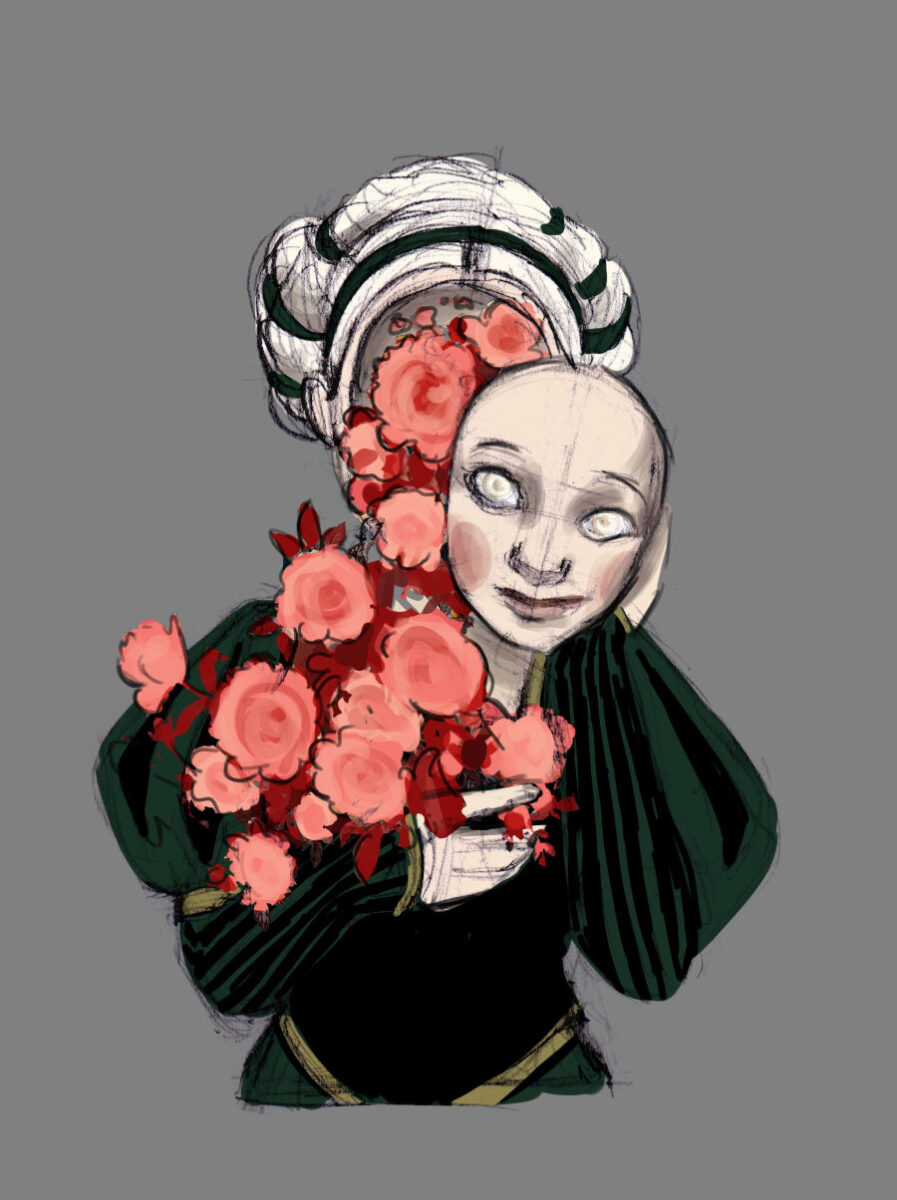
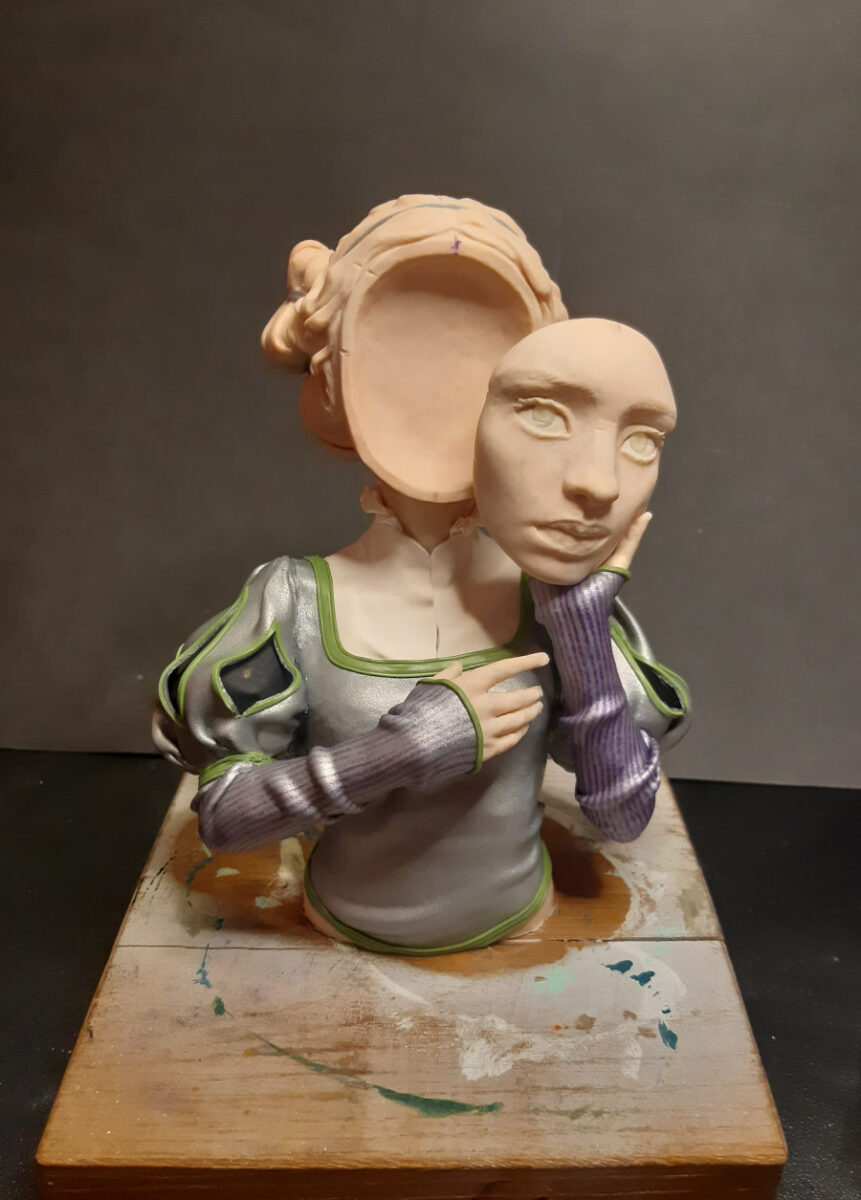
Thanks for taking the time to speak with me Ornélie. I’d love to know what your artistic background is. Was there something in your childhood that put you on the path to becoming the sculptor that you are today?
It all started with drawing, when I was very little. I’d spend hours copying the witches and princesses I saw in cartoons and storybooks. Cinderella, Maleficent and Snow White held no secrets for me! Then we had a lot of comics at home, drawn by great artists I admired: Loisel, Frazetta, Juillard or Rosinski were my references… I dreamed of being able to draw as well as them when I grew up!
There was nothing more beautiful than these characters, with their outfits from another time, living incredible stories in an equally incredible medieval, fantastic or magical setting. It made me dream. As for the rest, I had conventional schooling up to high school, while studying drawing on the side.
After school, I moved to Paris, where I took a degree in visual communications and graphic design, before continuing my studies at the prestigious Gobelins animation school. It was there that I consolidated my drawing skills and made rapid progress, thanks to sustained practice and rigorous training with famous teachers and talented students. Since then, I’ve worked as a drawing animator on a number of European feature films.
Having to visualize characters in volume in order to draw them naturally led me to figurative sculpture. I find in these two practices a similar requirement in the work of poses and morphology, the characters, their identity, their history…
Ornélie
The turning point was a trip to Normandy, where I came across a superb Napoleon III oval frame with curved glass at a flea market. I said to myself: “this frame is magnificent, I’ve got to do an illustration inside it!” And as the glass was in volume, I instinctively made an illustration in volume.
I’d found the plastic, tactile side I’d been missing with drawing. And unlike animation, where I’m a doer, I felt I’d finally found a medium where I could express all my creativity.
Since then, I’ve been a self-taught artist.

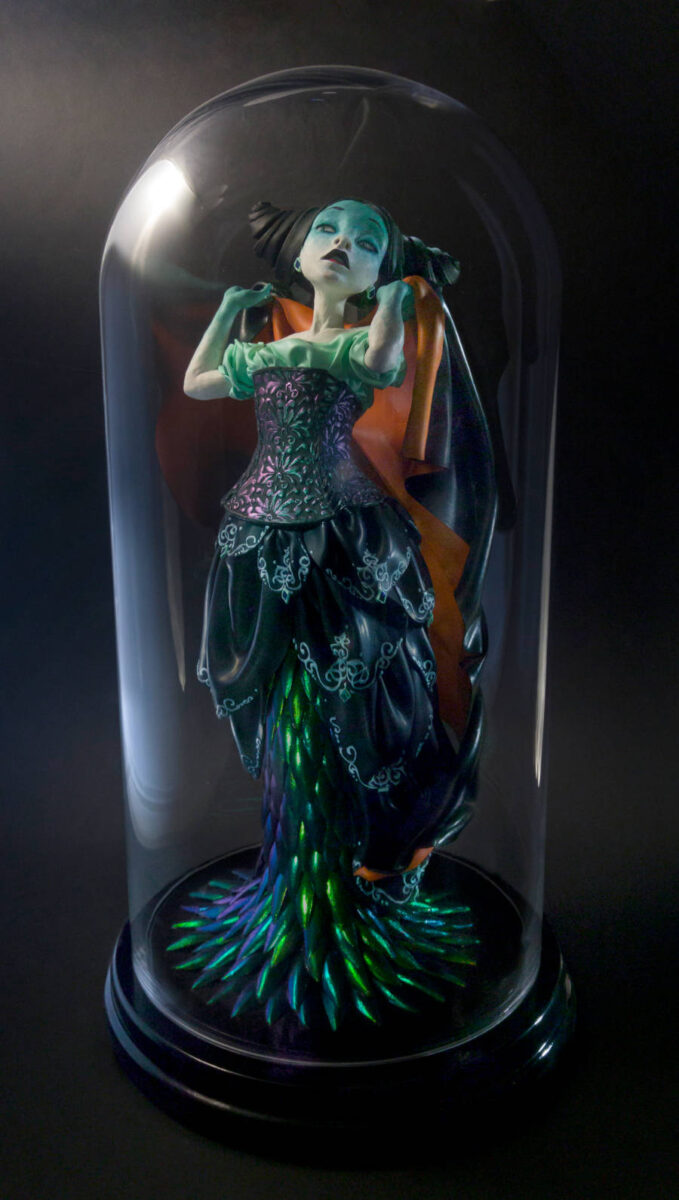
I love how your style is unique to you, even though your collection flows through multiple themes and characters. Who were you most inspired by when you began your artistic career and whose work – if any – has been a specific influence more recently?
Although I take my influences from classical painting, comics and illustration, pop art, street art, literature, music and there are plenty of sculptors and artists I adore; my work remains very much steeped in my film culture and cartoons in general. It’s more a constellation of influences.
I love beautiful objects! Especially old things. Refined fabrics, period costumes, rich in sumptuous patterns and noble, delicate materials. Old houses (abandoned is even better) with their furniture and antique wallpaper. Castles haunted by their history…
I really enjoy finding myself in those atmospheres from another era, out of time. It always inspires me.
On a similar note, we had the pleasure of featuring you in issue #47 of Beautiful Bizarre Magazine. In our Quick Q+A, you referred to other artists as “colleagues”, expressing deep appreciation for when artists exchange ideas and methods and “ultra-specific subjects together”. Why do you think this is important?
Yes indeed, these exchanges with other artists are very important to me. It’s even a vital need. In our lives as artists, many of us are more or less solitary.
When we meet up with “colleagues”, we talk about work. It’s liberating: we talk about all our technical worries, inspiration, administration, communication strategy… we don’t need to translate: we speak the same language, we have the same problems. It’s both exciting and reassuring.
It also allows us to take a step back from our work, which is difficult to do alone.
Ornélie
Do you have the opportunity to chat with other artists in this manner or is this something you would like to build further?
It’s almost systematic whenever I meet another artist. It’s the way I am. It’s always a pleasure to talk.
Your works involve so many layers, from the initial design to building your final characters and all of their clothing, decorations and accompanying props. Take us through the journey of creating an average sculpture (if there is such a thing!).
As soon as I have an idea, or an embryo of an idea, I start making one or more sketches, which will enable me to refine and visualize the concept. That’s when I begin looking for references. References are very important! References for costumes, hairstyles, motifs etc. So even before I start modeling, I already have a pretty precise idea of where I’m going, the colors, the general atmosphere.
I start by making a metal support structure, which I cover with a paste specially designed to make light, solid armatures. This is a very important step, as it’s here that I set up the posing, the dynamics and the overall proportions. Then I do the actual modeling. All my recent sculptures are entirely in polymer clay, which means I make everything: the eyes, fabrics, lace and embroidery. Recently, I’ve also started making insects and bones.
There are 2 or 3 firings, and then a sanding stage.
Finally comes the moment I’ve looked forward to, and which will sublimate the dozens of hours of modeling… painting! This is the stage that will finally reveal the sculpture in its final form. Suddenly, everything comes together with color to form a coherent whole. I love it.
It looks very orderly and methodical, but it’s actually very organic and the stages often overlap. I make mistakes and change ideas along the way. But what’s certain is that I keep working until I’m satisfied. And that doesn’t stop me from seeing what I could improve on the next piece.
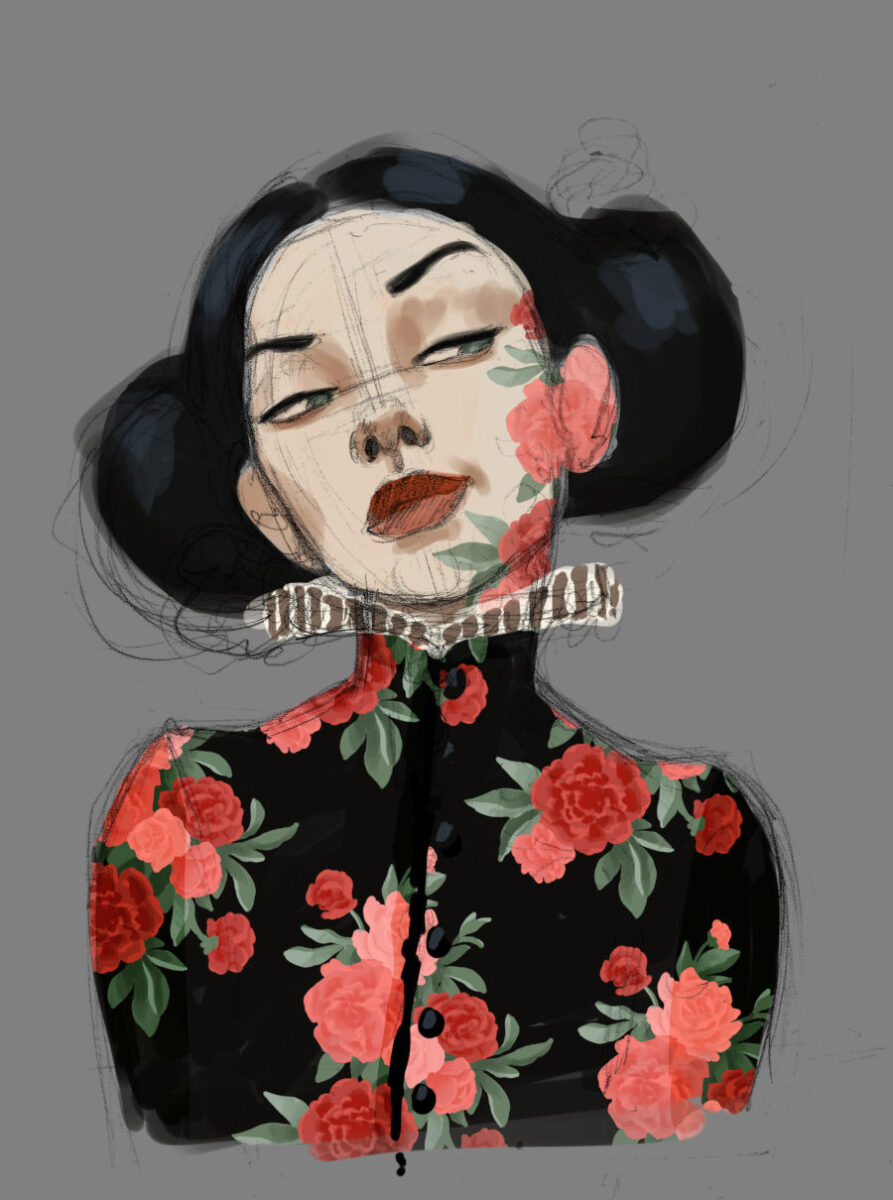

What drew you to using glass globes so often?
There’s the historical reason (the Napoleon III frame), and as I wanted to incorporate real insects and absolutely had to protect them, it became imperative.
Now that I’m no longer using real insects, I’ve kept the glass globes, because like an illustration – they give a frame to my characters. And I must admit that I love playing with this container. My characters can decide to come out of it, I can give the illusion that it’s filled with air, water… In short, it gives me lots of ideas to play with!
What about your creative process has really pushed past the edges of your comfort zone and helped you to progress further as an artist?
I’m teeming with ideas that I don’t have the time to develop in series. Each sculpture is a new technical challenge. So I’m never completely in my comfort zone. It’s very motivating and I always learn a lot, even when things don’t work out as well as I’d like. It’s taught me to be flexible and adapt as I go along.
I also made enormous progress when I switched from clay to polymer clay. It was a revelation for me. These modern materials offer a whole range of possibilities that have enabled me to go much further in terms of detail and material effects that were not accessible to me before.
Then I had to learn how to work with it, find the right clay that was neither too hard nor too sticky, the right firings to be both supple and solid, the right paints… I’m still learning every day. Now my challenge is to use it 100% in my sculptures.
Ornélie
Well your sculptures certainly caught the eye of our 2024 jury panel! I can’t interview you without talking about your incredible win. Congratulations again on being the 2nd prize Sculpture Award winner of the Beautiful Bizarre Art Prize 2024. Why did you enter the Beautiful Bizarre Magazine Art Prize?
Thanks a lot! Yes, it’s great!
I’ve been following Beautiful Bizarre for a number of years, mainly on the website and social networks. With Beautiful Bizarre, I’ve found a place that brings together everything (or almost everything) that I love and that best corresponds to my definition of “beautiful” in contemporary art. It’s also where I realized that I belong to a movement of figurative and pop-surrealist artists that has very little visibility in Europe.
It seemed to me that my work fitted in well with the magazine’s aesthetic, so I entered my sculptures in the competition. It was the 3rd time this year, and winning this prize today reinforces my belief that I’ve done the right thing. I think I’ll try again next year!
What do you feel you have gained from this experience?
First of all, it’s recognition for my work. And recognition that counts. For me, winning a Beautiful Bizarre award is a way of legitimizing my work, of being recognized by my peers, and of setting a benchmark for my career.
Danijela [Beautiful Bizarre Magazine’s editor-in-chief] contacted me after the 2023 competition, when I was a finalist. She told me she’d spotted my work, and invited me to take part in the “Paracosmic Escape” exhibition. This was a great stimulus for me to create “Royal Widow”. Apparently enough to win the 2nd place the following year! She’s since asked me to take part in an exhibition to be held in Los Angeles in the spring, and I’m really happy that my work will be seen in the US!
I feel that the payoff comes over time… the fact that Beautiful Bizarre shares my work, offers me exhibitions etc. That’s what brings visibility, and I hope the public will appreciate my work.
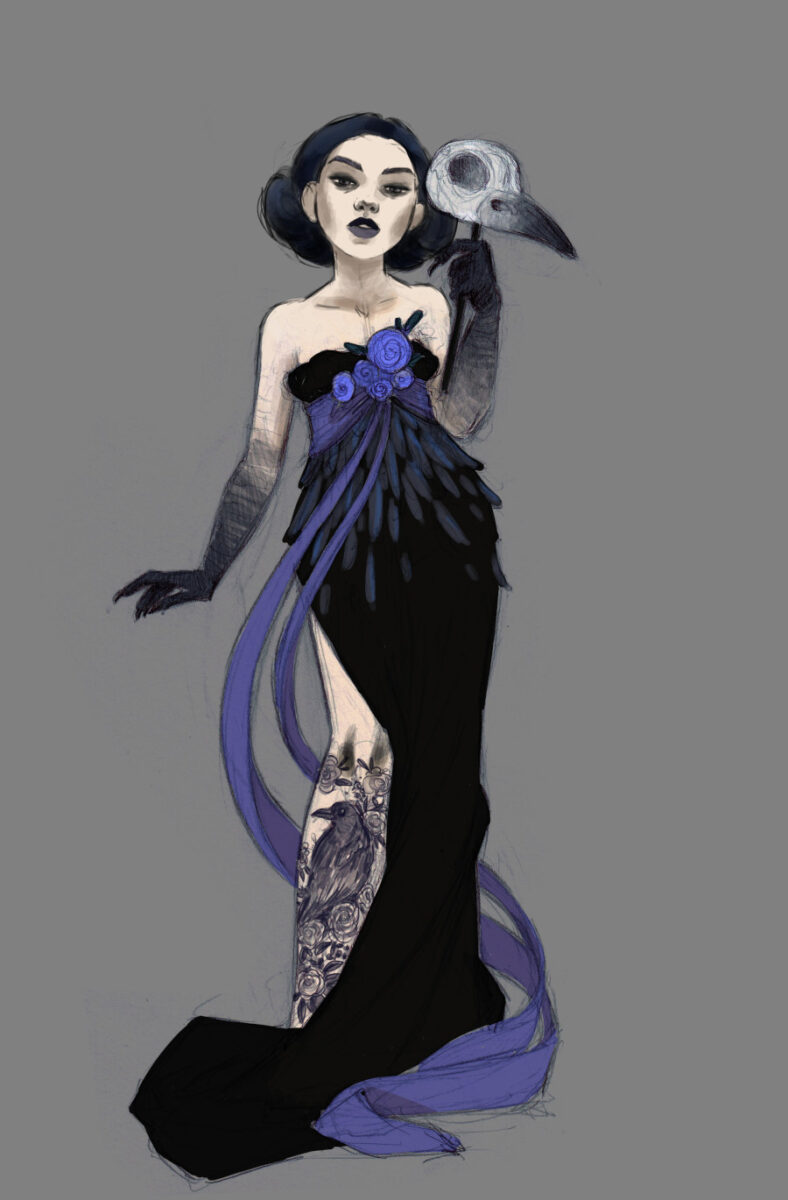
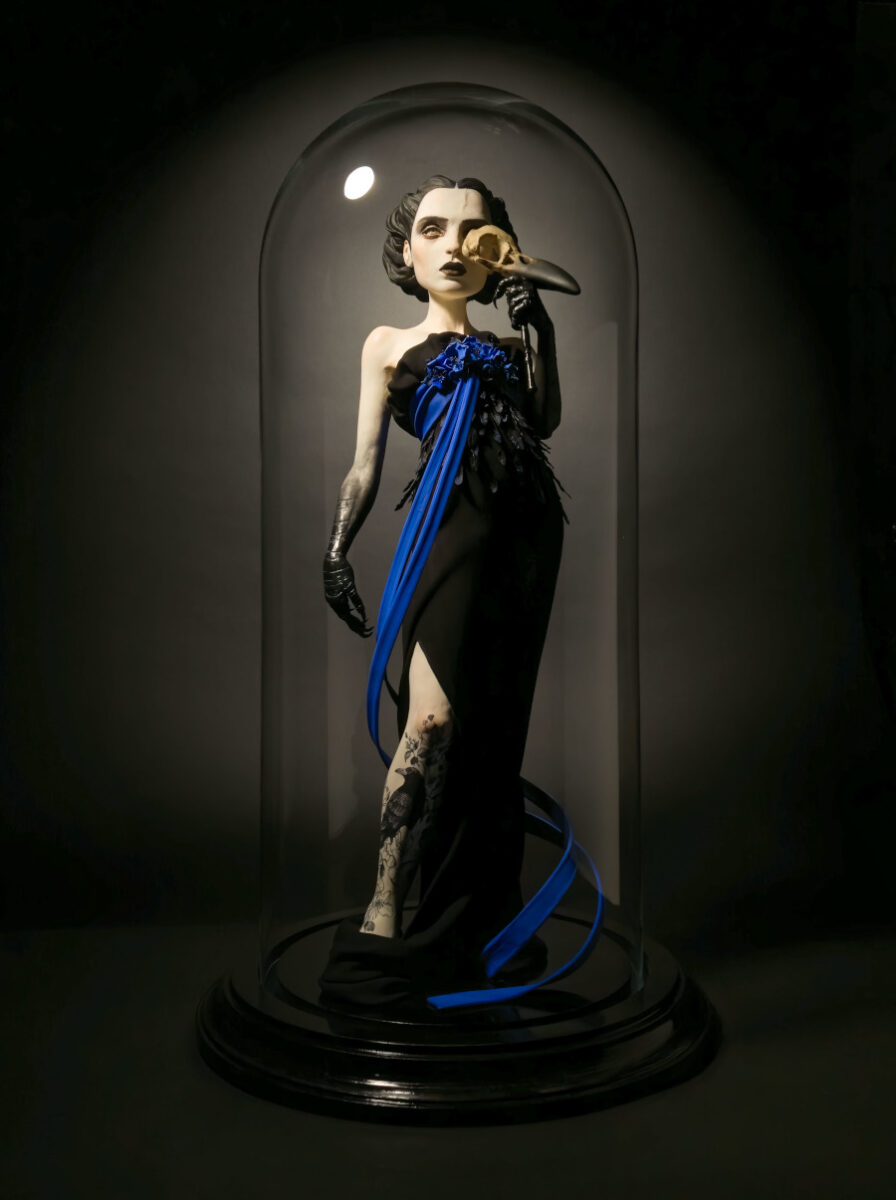
Oh I know that they do, Ornélie! Would you recommend our prize and encourage others to enter? If so, why?
I think this art competition is really unique because, while it maintains a high level of standards and always has a very knowledgeable and experienced jury, it remains very open compared to a lot of other competitions that are more conformist. And that’s rare!
Competitions can help you find your place and promote your work, and for artists who feel out of place elsewhere, it’s a good choice to take part.
Ornélie
And don’t forget that with social networks, it’s important to keep communities alive. In addition to bringing people together, it’s always a good indicator for potential investors of the public’s interest in a given type of work. Competitions provide a framework.
To finish, I’d like to focus on the future. Do you have any projects, or gallery shows coming up in 2025 that you’d like to share?
I’ve just finished a piece for a group show at the Corey Helford Gallery in the USA in April. I’ll also be exhibiting several sculptures at the Naïa Museum in France for their new season. It’s all very exciting!
Among my future aspirations, I hope I’ll have the opportunity to do more collaborations: with other artists, as I did recently with tattoo artist Destrue, or with designers, or major fashion houses, close to my universe. It’s the kind of experience that forces you to push your limits, because you’re not alone in the adventure.
But above all, I hope that this year will give me enough time to continue developing my practice, deepening my technique, and above all increasing my productivity to be able to envisage other exhibitions.
I live with the great frustration of not being able to practice sculpture full-time, so my dream would of course be to be able to devote myself fully to it, and to be able to make a living from it. If I can make a bit of progress on that front in 2025, that would be great!
